Just a person obsessed with reading and writing KakaSaku. Occasionally draws Pokémon, Sonic and Yoshi for my child’s benefit. And I have no idea how to actually use Tumblr so there’s that. 🙃
Don't wanna be here? Send us removal request.
Text


wanted to draw a tiny girl with insane upper body strength
2K notes
·
View notes
Text

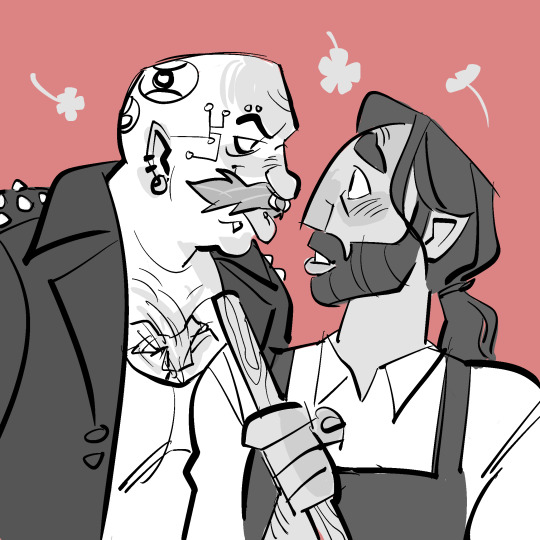

friend suggested flowershop owner x tattoo artist and guys i cant stop drawing them
5K notes
·
View notes
Text


Did you know? Blue roses can sometimes represent the impossible or unattainable
So yea basically this is a hanahaki Au (a fictional illness that causes someone to grow flowers in their lungs which need to be surgically removed or else it will kill its host) In my Au along with the classic symptoms of the disease, there are also massive psychological side effects like mood swings, anxiety, hopelessness, and rash/ illogical thinking that also develop as the sickness progresses. These negative thoughts manifest themselves in a personification of the disease.
She is a Seedrain-like creature (that’s the plant species from Sonic X btw) which mimics Amy’s appearance and who claims that they are one and the same being. She goes by “Rosy”. Amy strongly dislikes being told that they’re the same so she is constantly rejecting Rosy (unintentionally making the situation worse).
Amy sees Rosy as a parasite ruining her life while Rosy sees herself as an intrinsic part of Amy's body and mind
Rosy does not have a physical body and exists only within Amy. As her disease gets stronger so does Rosy who takes on a more monstrous appearance the weaker Amy becomes.
Amy tries to power through but it’s not really going that well for her :///
This is just a little au I like to keep in the back of my head atm for day dreaming and angsty scenarios.
419 notes
·
View notes
Text
"They're obviously sibling/family-coded! Why would someone ship them? It's so gross!" Like, okay, first of all, they're friends. Friendship is a thing that exists. Romance or family are not the only two options. But also, idk how to tell you this, but people ship it because it's hot. Or because the dynamic is cool. Or because the concept of shipping them is funny. Or because it's fucked up and maybe that's hot. People will still ship it if you think it's gross. People will ship it even if you see the relationship as being familial. People would still ship it if those fictional characters were actually biologically related in canon. Because it doesn't matter what their relationship is in canon. Or how you perceive it to be in canon. It doesn't matter if they even met in canon. It doesn't matter if they're from the same universe or even the same franchise. People are going to ship it. Why? Because they can. Go find something else to do.
135 notes
·
View notes
Text
Hey everyone, I know it's going to be a busy day for a lot of people, but Google enrolled everyone over 18 into their AI program automatically.
If you have a google account, first go to gemini.google.com/extensions and turn everything off.
Then you need to go to myactivity.google.com/product/gemini and turn off all Gemini activity tracking. You do have to do them in that order to make sure it works.
Honestly, I'm not sure how long this will last, but this should keep Gemini off your projects for a bit.
I saw this over on bluesky and figured it would be good to spread on here. It only takes a few minutes to do.
149K notes
·
View notes
Text
Bending: Part 4 (zutara)
AU where Katara finds unknown man on the shore, not far from the Northern Water tribe village. No one is speaking truth, bending is forbidden and Katara questions many things that seemed certain.
Part 1 Part 2 Part 3



692 notes
·
View notes
Text
Adobe is going to spy on your projects. This is insane.


160K notes
·
View notes
Text
Thinking about how Sakura was bullied from a young age. Thinking about how that bullying made her feel isolated and crumbled her self-worth. Thinking about how after meeting Ino she tried to mimic her in an attempt to fit in. Thinking about how she began to associate femininity with being accepted by her peers. Thinking about her obsessing over that acceptance to the point of slacking on her practical skills as a ninja and suppressing her true self (creating Inner Sakura). Thinking about how she admired Sasuke for being so unbothered by the opinions of others. Thinking about how she resented Naruto for how he was so free to be himself. Thinking about how Sasuke rejected her act. Thinking about how she came to admire Naruto for his rejection of the opinions of others. Thinking about how she cut her hair in the Forest of Death because she finally found something she cared about more than the acceptance of her peers.
52 notes
·
View notes
Text
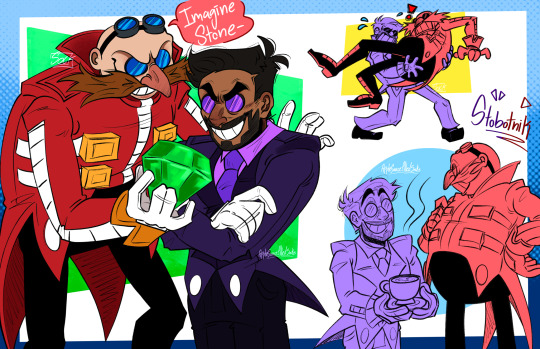
Big ole homos
I love them so much
Patiently waiting to see them again on the big screen
15K notes
·
View notes
Note
Hello. I really like your analysis of the political stuff in naruto, and I just read your latest one in regard to Hashirama's odd neutrality towards 'the curse of hatred™'. But I kind of want to know now: could you say the same about Kishimoto himself? Does he agree with the 'curse' in a simular vein as H.? Or is H. a deliberately flawed character rather than something that the narrative primarily sides with? (because that's the impression I've got but it's been a while, so idk, I didn't really get the nuance of the plot in the way that you explore when I first watched it)
Authorial Intent and the Curse of Hatred
Okay, so I've got like ten other Naruto asks in my inbox but I will prioritize this one real quick because it is actually very central to a lot of my posts. I already went a little bit into this mess when I analyzed the "Curse of Hatred", but I feel like this topic deserves a post of its own.
This particular part of the discussion leaves the confines of Naruto as a fictional universe entirely and instead delves into the realms of authorial intent analysis and criticism.
My TL;DR is Kishimoto very much intended for the "Curse of Hatred" to be real and the narrative sides with Hashirama and Tobirama (and that is problematic). In the longer version, I am particularly focusing on Tobirama as he is the founder of the Uchiha Clan Genetic Theories™.
I also apologize in advance because pointing out Kishimoto's shortsighted writing is something I have gotten harassed over in the past. Hence I believe some theoretic knowledge is needed.
<Analysis under the cut>
Note: As always, blue links are external links or other people's posts. Red links are my own posts that add context to my thought process.
The problem with Kishimoto's intent is that the guy almost never explains the intention of his writing. This is why discussions like "Was Itachi retconned" or "Does Kishimoto hate Sakura" persist to this day. The only thing we are left with is to instead infer the meaning from other sources (such as the manga itself or minor remarks from interviews).
My conclusion is influenced mainly by four things: The social and political context behind Naruto, Kishimoto's usual treatment of sensitive topics, the narrative of the manga itself, and fantasy genre conventions.
But before all that, here's a little info dump.
Death of the Author
In opposition to the idea that the "Curse of Hatred" is real in canon stands the idea that it was just Tobirama's racist propaganda piece - and this is actually a fairly widespread thought. Not necessarily a misconception, however, as it depends on your school of thought when it comes to engaging with fictional text - Extreme intentionalism (full submission to the author's intent), Anti-intentionalism (complete disregard of the author's intent), or anything in between. While extreme intentionalism can probably be considered the "truest to canon" (as opposed to anti-intentionalism, which is more like a subjective interpretation or "headcanon") it is also incredibly limiting to our fandom experience.
Before I continue this, I need people to understand that both approaches are valid. Especially in instances in which the author's intent translates very poorly into our contemporary understanding of the world, as is the case with the "Curse of Hatred". Both authorial intent and the audience's interpretation are vital puzzle pieces when engaging with a piece of media critically.
To clarify, I do not support Kishimoto's writing decisions in this. I am not pushing an anti-Uchiha clan agenda. What I am going for is analyzing Kishimoto's intended canon. As I have already pointed out, it is a canon that is problematic and nobody should be forced to submit to.
With that out of the way, back to the main topic.
Social and Political Context of Naruto
Personally, I believe it is possible that Kishimoto intended to portray themes of prejudice in his story. Mostly in the sense in which people get defined for their worst character traits (as we can see when comparing Tobirama's and Hashirama's characterization of the Uchiha Clan).
I do not believe, however, that he was aiming for racism specifically - and definitely not for scientific racism, let alone eugenic ideologies. And this has a lot to do with Japan's lack of sensitivity when it comes to racism.
For starters, Japan has a very ethnically homogenous society with about 98% of its population being ethnically Japanese and therefore having one of the lowest diversity scores in the world. On top of that, Japan has no national human rights institutions or laws against racial discrimination. The Japanese population is rather unsensitized to themes of racism.
To not turn this into a fallacy of composition, a different user pointed out that Naruto (as a story) was possibly influenced by Japan's reactionary right-wing movement (possibly revealing Kishimoto's own political standing). The movement responded to an increase in anti-Japanese sentiment across Asia. Said sentiment was sparked by a controversy in which Japan omitted its war crimes (which is a well-known pattern in Japanese politics).
At the very least, it is correct that Naruto is very pro-state in its way of protecting the state's reputation by hiding its crimes from the public consciousness. Kishimoto himself demonstrates an incomplete understanding of Japan's war history by unintentionally paralleling WW2 crimes in his story or claiming that the war was the result of mere grudges when, in reality, it was racism and imperialist ideologies.
While this is just my hypothesis, Kishimoto's lack of political and social awareness could easily influence his perception of social injustices, such as racism. Insensitivity, meanwhile, might reduce any motivation to engage with such themes.
Inadequate Realization of Sensitive Storylines
This might actually be less of a hypothesis when we look at Kishimoto's repeated failure to address sensitive topics in his writing with dignity and/or a critical lens. I've also ranted about this in an older post.
We are talking about child soldiers and death matches between children (Chunin Exams), slavery (Hyuga Clan), human experimentation (Orochimaru), human trafficking (Kushina and maybe Mito) genocide (Uchiha Massacre), and the invasion of neutral territory (Amegakure). In all of these cases, crimes are not further acknowledged than a brief admittance of "damage was done" before the plot forgets about them entirely.
It is a larger pattern in which social injustice is primarily introduced to add flavor in the form of "tragic backstories" but not actually to resolve it. We are supposed to condemn those tragedies, to feel sympathetic - but we are not supposed to criticize Konoha as a main perpetrator, enabler, or apologist.
Chunin exams? Never talked about again.
Slavery? Naruto promised to change the Hyuga clan but never mentions it again.
Human experimentation? Orochimaru is welcomed back after his exile.
Human trafficking? The Jinchurikis got Stockholm, so everything's good!
Genocide? Addressing that might tarnish the Uchiha Clan's reputation. So we don't.
Invasion of neutral territory? We never see Amegakure again after Konan's passing.
To me, it doesn't seem like Kishimoto ever truly cared about those social issues.
The Manga's Narrative
The story does not engage critically with itself. And frankly, it also does not demand such critical thinking from its readers either.
In the manga, we are often presented with incorrect or incomplete exposition from unreliable narrators. Obito lies all the time, Madara gets the wrong story from Zetsu, Itachi gets the wrong story from who-knows-where, and Sasuke doesn't know what's going on half the time. The interesting part is how the truth behind those lies is usually uncovered.
Usually, we do not know that any of them are perpetuating a lie until said lie gets corrected by another character. Said character is usually a "source" in the sense that they have personally experienced the (until then) falsified events.
It is very rare that the audience gets to pick up on little clues to realize that a character is lying. One such instance is when Obito directly contradicts Itachi in his rendition of the story. But even then, the conflict between their two renditions gets resolved by a "source" character in the form of Kushina retelling the events from sixteen years ago.

Now, let's compare this to the "Curse of Hatred".
I have already mentioned this in another post (where I analyzed the curse and its contents), but the "Curse of Hatred" is first officially introduced by Obito. He focuses on the Uchiha's war-torn history. Tobirama more or less builds on that, adding his hypothesis about the Uchiha Clan's Sharingan and its effect on the user. Then Hagoromo adds some things about the reincarnation cycle that might play into this. In the end, Zetsu wraps it all up by revealing that he manipulated the Uchiha Clan for centuries.
The problem is that not one of these puzzle pieces contradicts the other. Therefore, no lie gets officially "disproven" in the story itself. Tobirama's Theories are treated as though they were perfectly fine fact that does not require revision.
We can further infer Tobirama's credibility on the matter by judging the present characters' reactions.
Hashirama, as explained in my previous post, tolerates if not accepts Tobirama's ideas. Orochimaru shows himself hostile toward Tobirama but does not take the chance to contradict him. Sasuke, who is an Uchiha and has personal experience with the Sharingan, shows no signs of protest. Skepticism, yes, but it slowly fades away until he seemingly accepts Tobirama's words as truth. He does not even attempt to argue against it.

Add to that that Tobirama is generally presented as a truthful character, described as "rational" and "principled" in the databook. He regularly criticizes or insults other characters without the bat of an eye, seemingly having no problem with tarnishing his own reputation, unconcerned with keeping up false appearances. He is not the type of character to lie.
Yes, Tobirama comes off as a bigot regardless, but that's because he's essentially an asshole and not because he is actually intended to be racist.

Fantasy Fiction Conventions
In fantasy, none of what Tobirama says is actually uncommon. In fact, if anything, his theories concerning the Sharingan resemble popular fantasy tropes.
In Anime, many powers are awakened through trauma. This is called "Traumatic Superpower Awakening". The Sharingan is just one of many offenders, even in the story of Naruto. This reflects Tobirama's idea that the Sharingan is triggered through great emotional pain.

It is also a common trope that characters who gain too much power eventually go insane. This is called the "With Great Power Comes Great Insanity" trope and reflects the Uchihas' to essentially take away psychic damage alongside each newly awakened Sharingan power. Kishimoto just specifically linked that insanity or pain to the Sharingan (which represents the power of the Uchiha).

Yet another trope is the "Personality Powers" trope. This one can be seen in the Uchiha Clan's tendency to feel deep love and hate - at least one of which is essential for the awakening of a Mangekyo Sharingan (and, depending on the circumstances, a regular Sharingan). Hence Tobirama calls it "the eyes that reflect the heart". In other words, the personality facilitates the power.

Last but not least, we've got the fantasy races trope. The author invents a race and then assigns it distinct characteristics (both physiology and behavior-wise).
In its most extreme cases, this can be used to create an "enemy race" (such as orcs, vampires, demons, etc.) for the good guys to fight. It usually removes complexity from the story by dumbing down the enemy to simply just being "born evil".
Now, notice how the Uchiha Clan's Hatred could be considered a reflection of Kishimoto's idea that wars are caused by grudges? Furthermore, Kishimoto makes that comment at a point in time (February 2012) when all three main antagonists of the story are Uchihas (Madara is revived in chapter 559, which was released October 2011), and then releases Tobirama's theory a year later (February 2013).
This one, unlike the other three, is particularly controversial as fantasy races often get conflated with real-life ethnicities. This is not always the intention of the author, however, as they often never intended to portray racial stereotypes. For two particularly popular examples, take a look at Tolkien's "Lord of the Rings" or Itagaki's "Beastars".
On one hand of this debate, you have that fantasy races are unlike human ethnicities and do not necessarily reflect reality, simply because the author decides what is real in canon or not and because fantasy is always a lie from a real-world perspective. Hence the Curse of Hatred, or rather, Tobirama's Theory is canon.
On the other, fiction does not exist in a vacuum and it is impossible not to apply our contemporary understanding of racism and ignore what are otherwise screaming red flags of racist ideology. Hence we recognize Tobirama's explanation as racism and wish to reject the Curse of Hatred as a concept.
But these two ideas can coexist.
The problem is just that Kishimoto likely only accounted for one thing and not the other. His intention translated very poorly into our contemporary understanding of the world, making Tobirama (and therefore, Hashirama as well) the victim of short-sighted writing.
Who cares anyway?
In the beginning, I explained that regardless of what Kishimoto intended for his story, any interpretation is valid. So why should we care about what the author thinks?
In my analyses (which are separate from my headcanons), I will usually take an "Extreme Intentionalism" approach in which I prioritize the author's intent over the reader's interpretation. Not because I am opposed to the idea that the reader's interpretation is relevant to the meaning of a text but because readers' interpretations are unique to the individual. Focusing on such an individual interpretation can easily alienate those who don't share it. Hence I like to focus on something that is more informative, almost objective in nature, such as the author's likely intended canon - which people can then mould into whatever suits their headcanon best.
I have also noticed that, sometimes, anti-intentionalist takes will devolve into full-blown lies (sometimes with the purposeful intention of omitting canon). This lie can then be upheld in an attempt to condemn or rather bully those with intentionalist interpretations. This unwittingly protects the writer (as well as problematic writing conventions) from criticism.
This is why I think even Anti-Intentionalists should inform themselves of an author's intention. This is, more or less, an aspect of media literacy as it allows us to identify biased or manipulative narratives and take purposeful action. In our case, this involves questioning and criticizing Kishimoto as an individual, raising awareness about his writing's shortcomings, and learning from his mistakes.
25 notes
·
View notes
Text
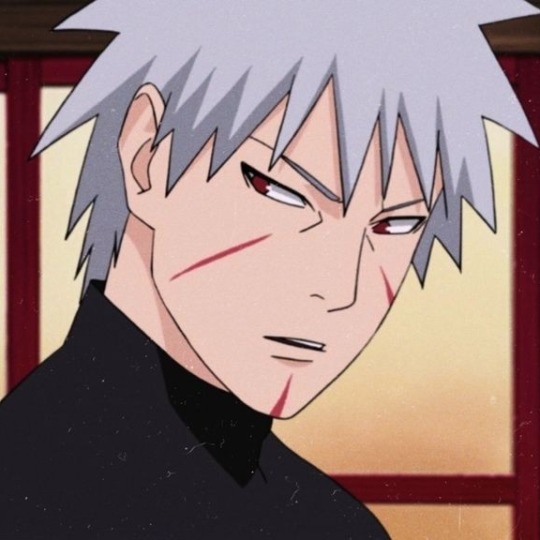
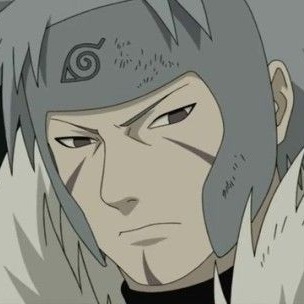

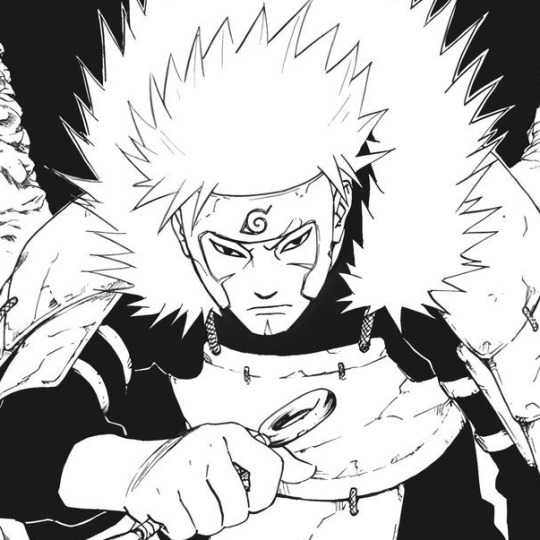


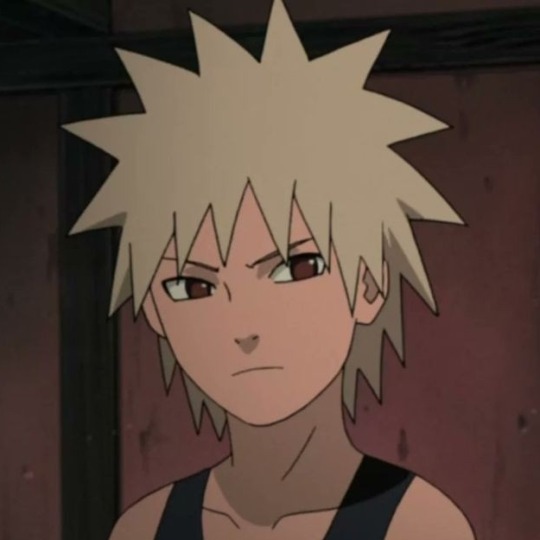

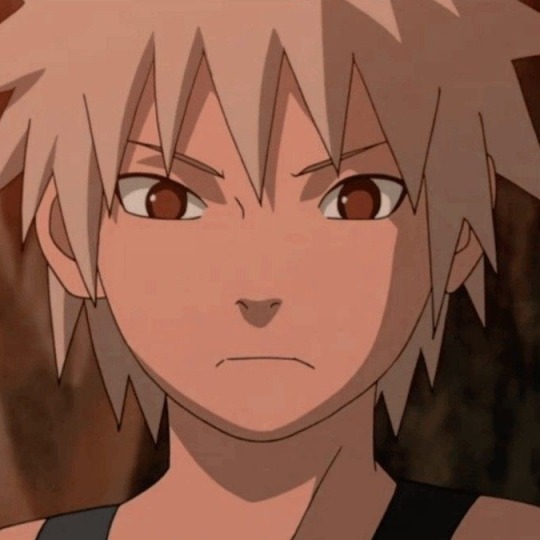

⌕ naruto • senju tobirama.
like or reblog if you save/use.
1K notes
·
View notes
Text
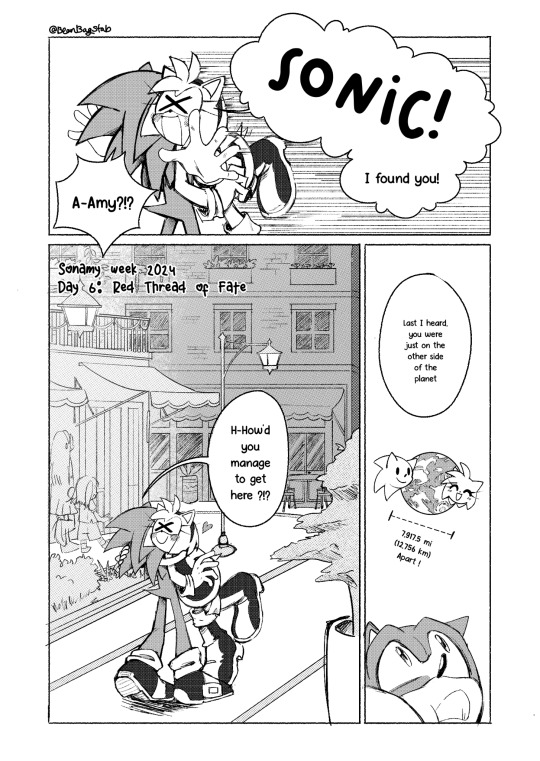
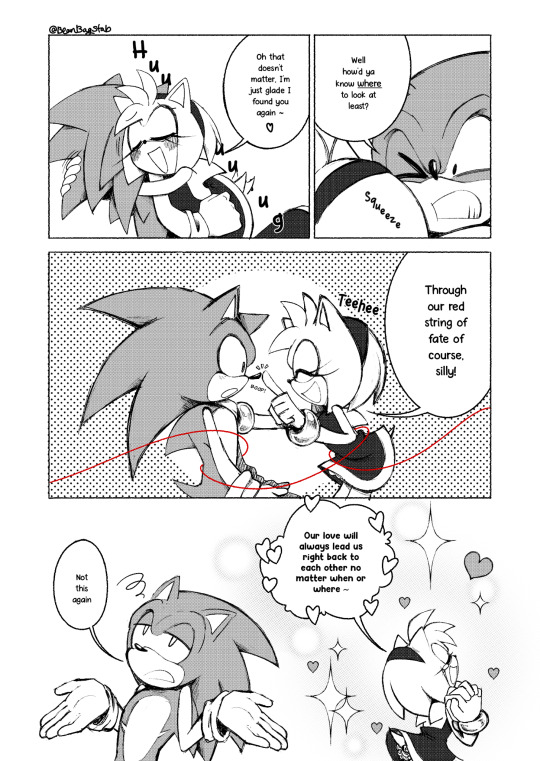
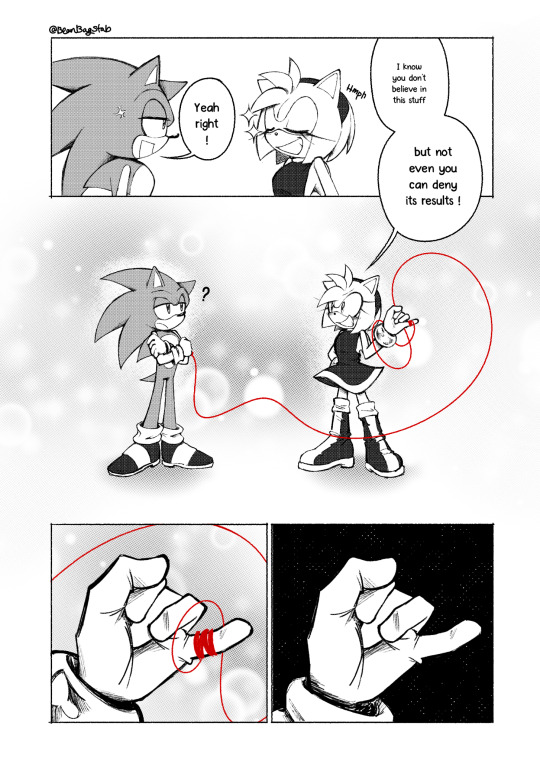
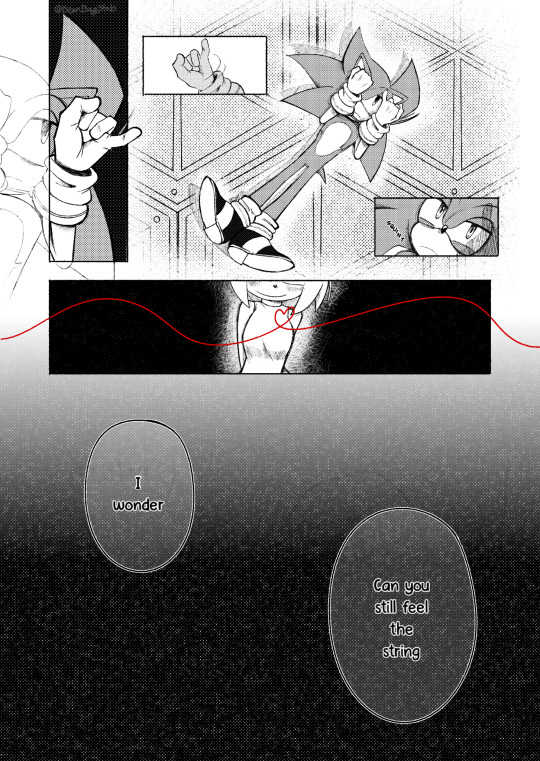
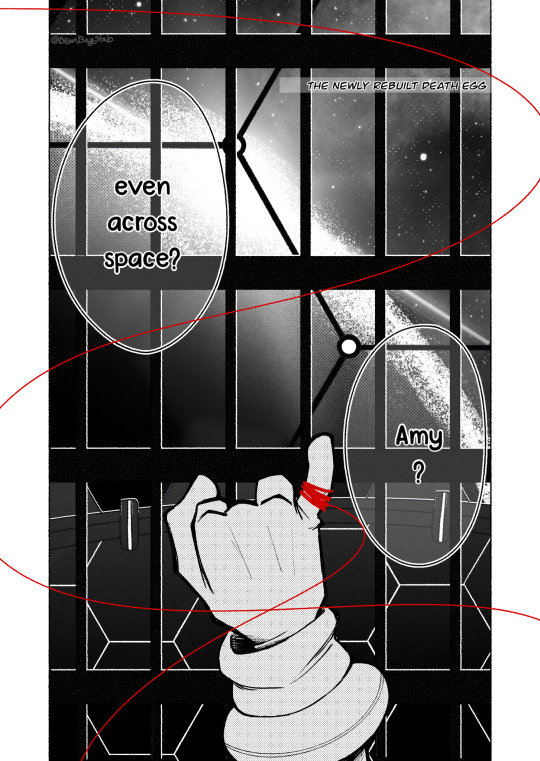
No matter when or where 💖
Sonamy week 2024 Day 6: Red Thread of Fate
Amy would totally 100% believe romantic, soulmate stuff like this and Sonic would not.
But he believes in Amy and that’s close enough
2K notes
·
View notes
Text




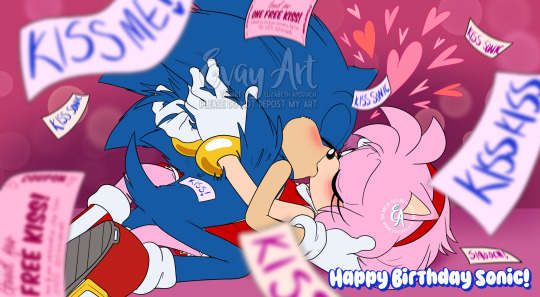
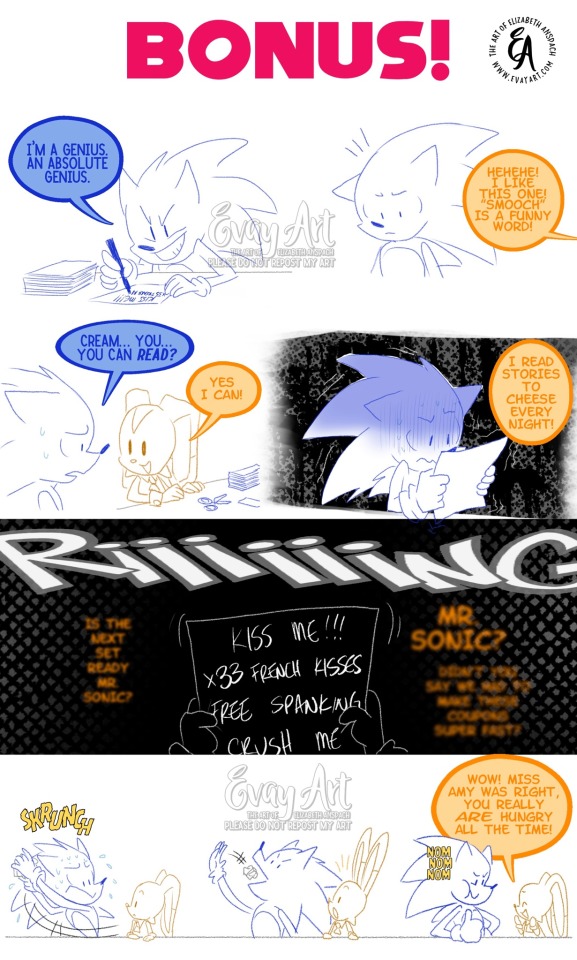

Happy birthday Sonic! 🥳🎈🦔 Hopefully somebody bought you Chapstick as a present 😘
Thank you to @hedgethemaze for the fun idea! A sequel to Amy’s Birthday Wishlist was too delicious to pass up! 😉💖💙
@hedgethemaze also made me realize that I’ve rarely drawn Modern!Sonamy kisses so this was the perfect opportunity to start making up for the error of my ways! Shame on me.
3K notes
·
View notes
Text
Happy Birthday to youuuuu!~🎵

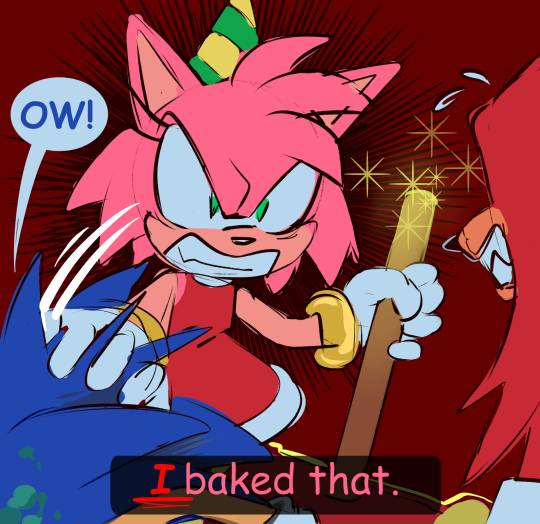
Knuckles, I think you should start running, my guy
14K notes
·
View notes
Text

Modern AU/Soulmate Au (you start seeing the world in colors when you meet your soulmate)
2K notes
·
View notes
Text
The king of my heart ❤️
Hatake Kakashi throwing hands compilation
3K notes
·
View notes
Text
Fanfic writers are like crows. If you give them treats (comments) they will bring you shiny things (fanfic)
#I’m a floofy Scottish highland#please gib pets#as in comments#I’ll prance around a field happily#give you licks#then I’ll maybe get back to finishing my WIPs#ao3#fanfic#fanfiction
63K notes
·
View notes